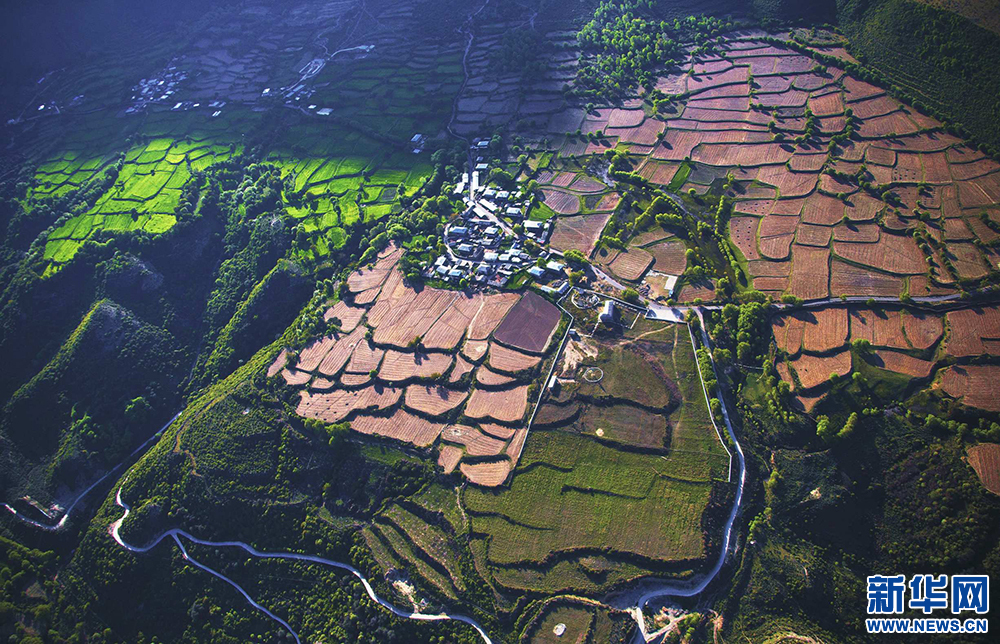Infrastructure construction accelerated in China's Tibet and Tibetan-inhabited areas
China's central government continues to increase support for infrastructure construction in southwest China's Tibet and Tibetan-inhabited areas in Qinghai, Gansu, Sichuan and Yunnan Province, striving to break the bottleneck that constraints the social development and people's livelihood improvement in those regions.
Since 2012, Tibet has opened the Lhasa-Shigatse Railway, and the Lhasa-Nyingchi Railway also enters its construction, starting a new era in railway construction. Highway distance increased from 62,500 kilometers in 2012 to 82,100 kilometers in 2016, an increase of 25.9 percent. There are 71 domestic and international air routes connecting Tibet with 41 cities.
The Sichuan-Tibet Power Interconnection Project has been put into operation, eliminating serious power shortages in Chamdo Prefecture in the Tibet and the southern part of the Garze Prefecture in southwest China's Sichuan Province. The total power installation capacity is 2.65 million kilowatts, 1.3 times more than that in 2012. For the first time Tibet achieved net electric power transmission of 200 million kilowatts hour outwards.
Sichuan implemented two rounds of the "three-year transportation battle", while completing and opening the Yading airport in the Daocheng County in Garze and the Hongyuan airport in Aba Prefecture, construction on the Gesar Airport in Garze, the Chengdu-Lanzhou Railway, the Chengdu-Ya'an part of the Sichuan-Tibet Railway and the Ya'an-Kangding as well as Wenchuan-Markham Highways have also begun. At the end of 2016, the total distance of the highway in Tibetan-inhabited areas in Sichuan reached 45,200 kilometers.
In southwest China's Yunan Province, 1,142 projects have been completed of the 1,344 major projects implemented over the last five years, and a total of 103.9 billion yuan (15.7 billion US dollars) have been invested.
While northwest China's Gansu Province opened in 2013 the Xiahe Airport and the Linxia-Hezuo Highway, respectively the first civil aviation airport and the first highway in its Tibetan-habited areas, the first railway line, from Lanzhou to Hezuo, has also been under construction in 2016. There are currently 10,046 kilometers of highway, and 95 percent of villages are accessible to modern transportation in the Tibetan-inhabited areas.
The highway distance in Tibetan-inhabited areas of northwest China's Qinghai Province reached 65,117 kilometers in 2016, increasing by 11,367 compared with 2012. The 251 townships and 1,659 villages in its Tibetan-inhabited areas are all accessible to highways.
Your Comment
Name E-mailRelated News
-
;
-
-

-
Environmental protection strengthens in China's Tibet and Tibetan-
The principle of putting ecological protection first continues to see increased investment and has achieved remarkable results.
-
-
-

-
Support to China's Tibet and Tibetan-inhabited areas increased ove
In 1994 at the third Central Conference on Tibet Work, the Chinese government formally made the major decision of providing to southwest China's Tibet partner assistance in economy, education, culture and other fields.
-
Based in Lhasa, Tibet Vista is a Tibet travel agency that specialized in Tibet permit, and Tibet tours for both private and group travelers at a local price!
•4 Days Lhasa City Group Tour from USD 460 •8 Days Everest Base Camp Group Tour from USD 850 •15 Days Mt.Kailash Group Tour from USD 1780 •2016 Tibet Train Tours from Beijing, Shanghai, Chengdu, Xining,etc










